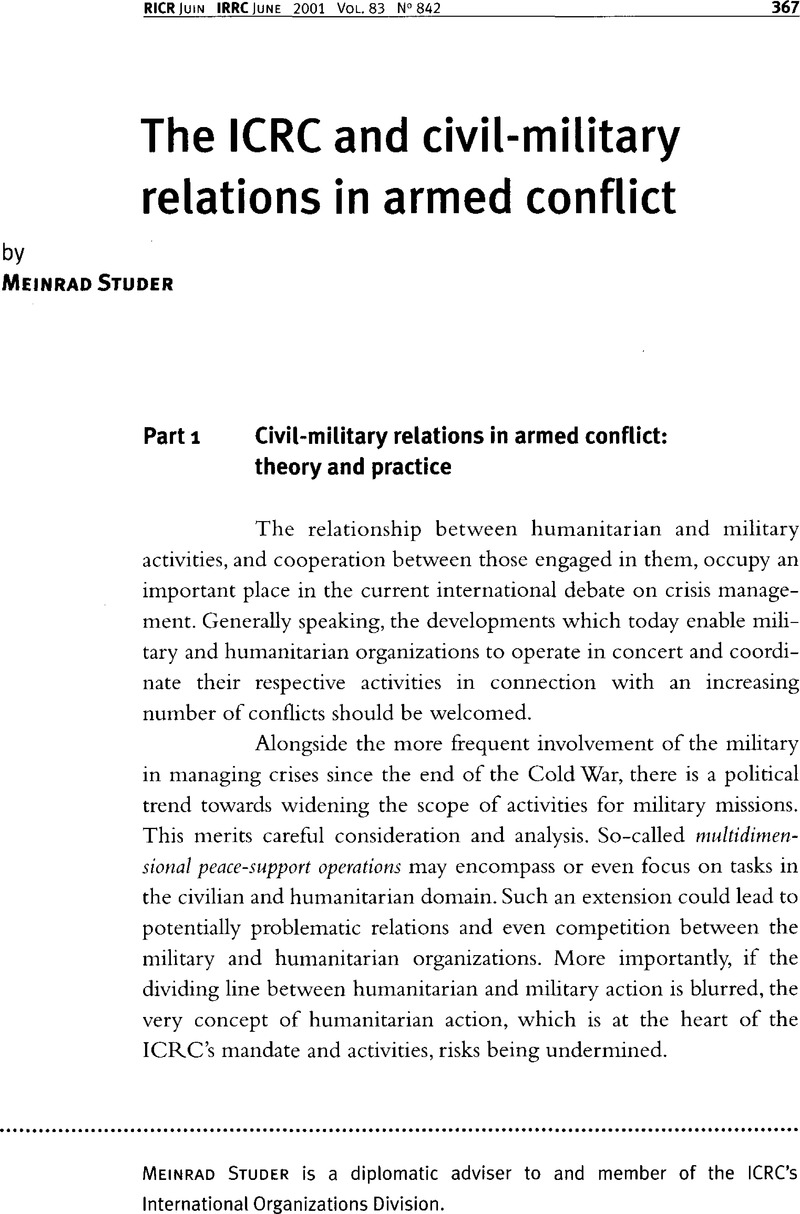Published online by Cambridge University Press: 19 April 2010

l Kosovo Report of the Independent International Commission on Kosovo, Oxford University Press, 2000, p. 208Google Scholar
2 Comprehensive Review of the Whole Question of Peacekeeping Operations in all their Aspects, UN Doc. A/55/305-S/2000/809, 21 August 2000.
3 An Agenda for Peace, Report of the Secretary-General, UN Doc. A/47/277S/24111,17 June 1992.
4 “Observance by United Nations forces of international humanitarian law”, published in IRRC, No. 836, December 1999, pp. 812–817.
5 Compendium of Views and Experiences on Humanitarian Aspects of Peacekeeping, NATO Ad Hoc Group on Peacekeeping, 1999.
6 ICRC/UNPROFOR Seminar, 23 February 1995.
7 Joelle Jenny: “Civil-military cooperation in complex emergencies: How far can we go?”(to be published)
8 Op. cit. (note 5).
9 Loc. cit. (note 4).
10 Op. cit. (note 5).
11 Text published in IRRC, No. 310, January-February 1996, p. 69. See in particular para. G.2.(c).
12 Training for Peace Workshop, Pretoria, 21 November 1995.
13 Quoted from Laurence, Tim, “Humanitarian assistance and peacekeeping: An uneasy alliance?”, Whitehall Papers Series, 1999Google Scholar.
14 Op. cit. (note 7).
15 Statutes of the International Red Cross and Red Crescent Movement, 1986.
16 Agreement on the Organization of the International Activities of the Components of the International Red Cross and Red Crescent Movement, 26 November 1997, published in IRRC, No. 322, March 1998, p. 159.
17 See note 11.